Can a Mobile Site Reduce Your Google Ads Cost Per Click?

A lot of different factors go into the calculation for determining your Google Ads CPC. It’s no surprise that we marketers struggle to keep up with what is and isn’t relevant. It’s even worse when you consider that every company offering an ads platform will only specify a portion of what goes into their calculations.
It’s fine, really. If Google told you every single detail about how their algorithm works, or even just published the algorithm publicly, you can bet there would be loopholes to exploit within days. With the calculations kept secret, at least there’s some incentive to act in the best interests of your viewers, and not just the search engines.
Calculating CPC
Google will happily tell you what goes into their calculation for CPC. First, though, you have to remember that it’s an auction system. The same keywords, the same ads, the same targeting, everything identical in two different situations where the only change is the day of the year can result in dramatically different CPCs. Why? Competition. If you set a bid cap of $1 and no one bids against you, you’ll get your ads basically free. If your $1 bid is out-bid by people willing to bid $2, you’ll max out your bid and only get low-tier placement.
CPC can range from a few cents all the way up to prices in the $50-100 range. The former are low volume, low competition keywords. The latter are extremely high value, high competition keywords. Given that some high-end retailers can spend millions per month on advertising, it should come as no surprise that the niches they want to dominate will be dominated.
On top of all of this, Google will adjust prices depending on your Quality Score. This alone is huge, because a wide array of factors go into the calculation of quality score.
Cascading Influence
In a sense, nearly everything goes into your CPC. The total cost of your ads is your CPC calculated with your quality score. Your CPC is calculated based on an array of factors that include elements like your past performance, your choice of keywords, and the relevance of your landing page.
Your quality score, meanwhile, is calculated by a bunch of additional factors. Your landing page quality and usability, your ad copy relevance to your landing page, your click-through rate, your account performance; it’s all part of an ongoing quality score calculation.
Then you have to consider the factors that influence those factors. The usability of your website is influence by your design, your color choices, your layout, how well your scripts work, your load times, the geographic location of your servers, and on and on.
Where do we draw the line? Thankfully, at least for the purposes of this particular article, it doesn’t really matter.
Mobile Compatibility
Google has been playing an increasing emphasis on mobile compatibility for years now. Initially, it was a mere suggestion to have a mobile version of your website, back when smartphones were an uncommon luxury item mostly used by the silicon valley elite and those with more money than sense, if there’s a difference between those two groups at all.
As mobile browsing has become more and more prevalent, so too has the emphasis Google places on mobile compatibility. Their suggestions became recommendations, which became best practices. For a while, anything went. You could use a dedicated m.domain.com mobile site, or an adaptive design, or even a task-focused site app and it would suit Google’s recommendations. These days, though, they recommend responsive design over other options.
It’s easy to see why; responsive design adapts to the size of the device browsing it. You can test a responsive design just by resizing your browser in the desktop. No matter what odd dimensions your device uses, responsive design will work. Other designs might leave fringe devices out of the loop, which means some proportion of dissatisfied users.
These days, Google has taken an even stronger perspective. Their recent Mobile-First Indexing Update hit the playing field back in March. It hasn’t done a ton to shake up search results, but it has further emphasized the need for a mobile site. Essentially, if you have both a mobile and a desktop site, Google gives preference to mobile versions for the sake of indexing. Since they look primarily at usability and content, and care less about sidebars and ads as long as they don’t exceed a certain density, mobile is a fine place to start.
For the moment, Google rightly assumes that any site with a good mobile version will likely have a usable desktop version. The inverse is not true; a good desktop version doesn’t necessarily mean the site even works on a mobile device. Google is simply pushing this update as a prelude to future penalties for sites that don’t have a mobile site at all.
For now, Google is not treating different designs for mobile sites differently. A m.site, an adaptive design, and a responsive design all work just fine. It’s more of a simple yes/no question. Can mobile users use your site, yes or no?
Mobile in Google Ads
If you don’t have a mobile site, and you use Google ads, chances are pretty good over the last several months you’ve seen banner notifications about mobile compatibility. Google will harp on you endlessly in every way they can, from newsletters to banners in ads to banners across webmaster tools and your search console, all to cajole you into creating a mobile version of your website.
One of my sites lacked a mobile version, nevermind why. I have firsthand experience seeing this banner at the top of my Google ads dashboard. Let me tell you what happened.
I finally decided to implement a basic responsive design. It’s not full of bells and whistles, but it’s functional and usable for those who come to read the site or to browse my services.
As soon as Google re-indexed the site with the mobile version, several things happened. I immediately bumped up a little in the search ranks for keywords where such mobility was more easily plausible. The banner enticing me to make a mobile version in Google ads disappeared. At the same time, my quality score went up. That alone is anecdotal evidence that mobile compatibility directly influences quality score. I didn’t make any other major changes, so unless it was the coincidental publication of a particularly tasty blog post, the site change was the only factor that mattered.
Quality score, as we know, is heavily influenced by user experience. Adding a mobile site was a dramatic improvement to the user experience of a wide swath of users, specifically those on mobile devices. Their user experience went up, and so too did my quality score.
Quality score, then, goes into the CPC calculations. And, indeed, my costs went down a hair. Now, I’m operating in niches where variations in keyword, in day, in copy, and in the whims of the universe can change CPC on a daily basis. Scores rise and fall for many reasons, and sometimes for no reason at all. I can’t definitively point to the release of a mobile site as the reason my scores went up and my costs went down, but it’s persuasive enough to me personally.
Of course, this is all anecdotal. I have a sample size of one (1) site and one (1) ad account. That’s far from scientific. That means I have a question for you:
Do you have a mobile site? If not, I want you to make one, and tell me if your quality score goes up, and if your CPC for your ads goes down, with no other changes being made. I understand this is a bit of an investment, so you don’t have to do this solely for my sake, but I would appreciate the data. Shoot me a message or leave me a line in the comments and we can talk.
Mobile for Lowering CPC
Is making a mobile site a good way to lower your CPC? I’m not convinced. The reason is, a good mobile site is a serious investment. Sure, you can run your site through one of those simple converters, but that’s not likely to give you good results. It’s better than nothing, and you may still see improvement, but who knows how it all shakes out.
If you’re capable of making the investment necessary to roll out a responsive design, it can be a marked improvement to your CPCs. Or, if you’re in more open niches or operating on low budgets, it might not be noticeable at all.
There are a lot of other changes you can make that will have an equal or greater impact on your CPC. A change of keywords, the addition of new negative keywords, a change in targeting options, a change in ad copy, ad images, or ad placement; these can all affect costs. Heck, for that matter, changing from search ads to display network ads will almost guaranteed drop your CPC, and that’s a very minimal change.
That said, there’s not really a way to go wrong with a mobile design. Frankly, it’s incredibly important, and the fact that I put it off as long as I did probably cost me a lot more than the investment it took to make that new design.
The way I see it, you shouldn’t use Google ad CPC as your sole reason to create a mobile version of your site. Instead, you should recognize the number of users using mobile devices, the subtle pressure from every element of Google’s algorithm, the pressure from other sites who have mobile versions when you don’t, and all the other elements encouraging or demanding a mobile site. If all of that doesn’t convince you, well, I’m sure something will eventually. I don’t believe for a minute that Google is done with their pressure. I firmly believe that within the next five years, not having a mobile site will be a definite search penalty.
Should You Make a Mobile Site?
All of that said, there’s always the chance that you’re operating in a niche where mobile device usage is nearly nonexistent. It’s entirely possible that your customers are 100% on desktop devices, and that even if you had a mobile site, you’d see zero change because of it. Of course, there’s no way to tell for sure without having that mobile site in the first place.
Even if you don’t think you’re going to get any mobile traffic, having a mobile site will be a benefit. With mobile-first indexing, it will give you a leg up over competitors that themselves have put off creating mobile sites. That will carry over to desktop rankings as well, since there’s only one index. Plus, of course, the higher quality score in Google ads will affect your costs across the board. You don’t have to be targeting mobile users to take advantage of the boon having a mobile site grants you.
There’s basically no reason to keep stalling on mobile site development. At this point, you can hire a freelance coder to whip you up a functional design in a matter of a few weeks at most. Delaying even this long is a waste of money.

 ContentPowered.com
ContentPowered.com
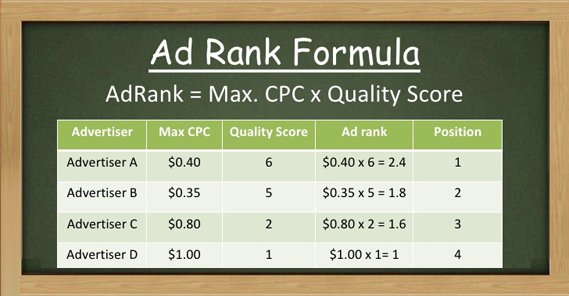
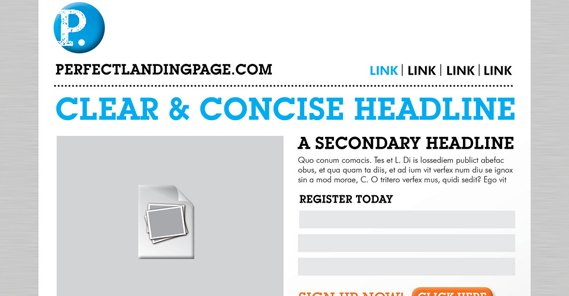
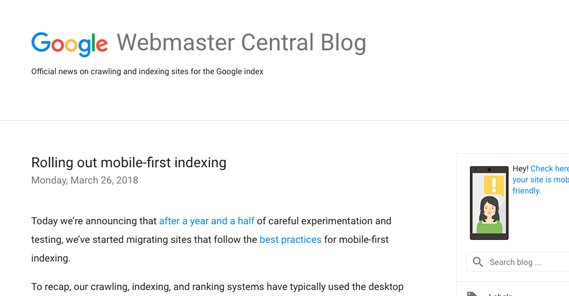

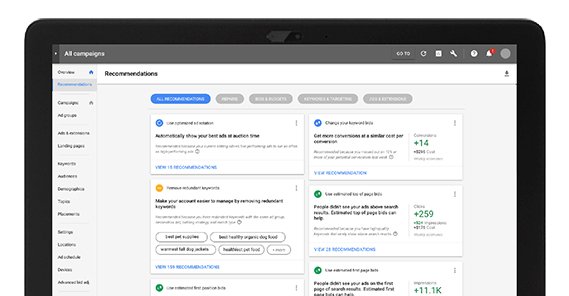
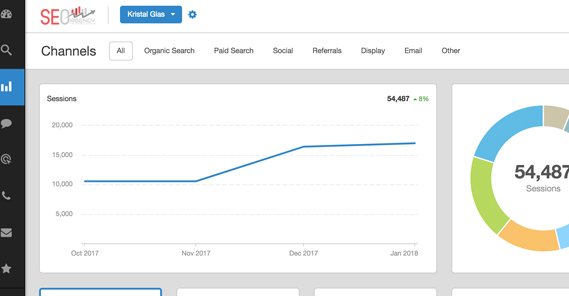
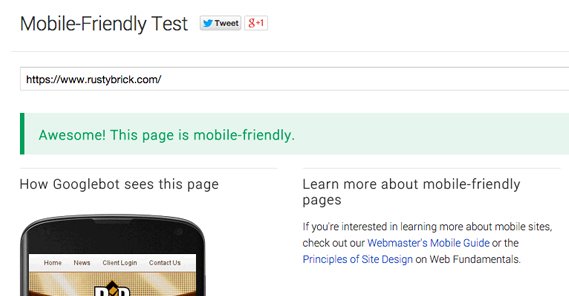




Joe Thulin
says:Interesting, I’ve never considered a mobile site actually saving me money. Currently getting a quality score of 3-7 for most of my keywords so if a mobile site will help me achieve a higher score I think I’m going to pull the trigger on a redesign. Do you have any recommendations on how I can redesign my site? Developers to hire? Thanks James!
James Parsons
says:We’ve had a lot of luck with Freelancer.com and Upwork.com. Redesigning a site with mobile can be a simple task or a very complex task, depending on how many unique pages need redesigning. For small sites it shouldn’t cost you much. Relevance is super important for quality score, but if you’re getting a 3-7 score with a non-mobile site than I’d imagine making your site mobile friendly would bump those scores up by 1-3 points each (which is what we’ve seen in our tests). Make sure you check the Recommendations tab as well for any other suggestions Google has to improve your performance.